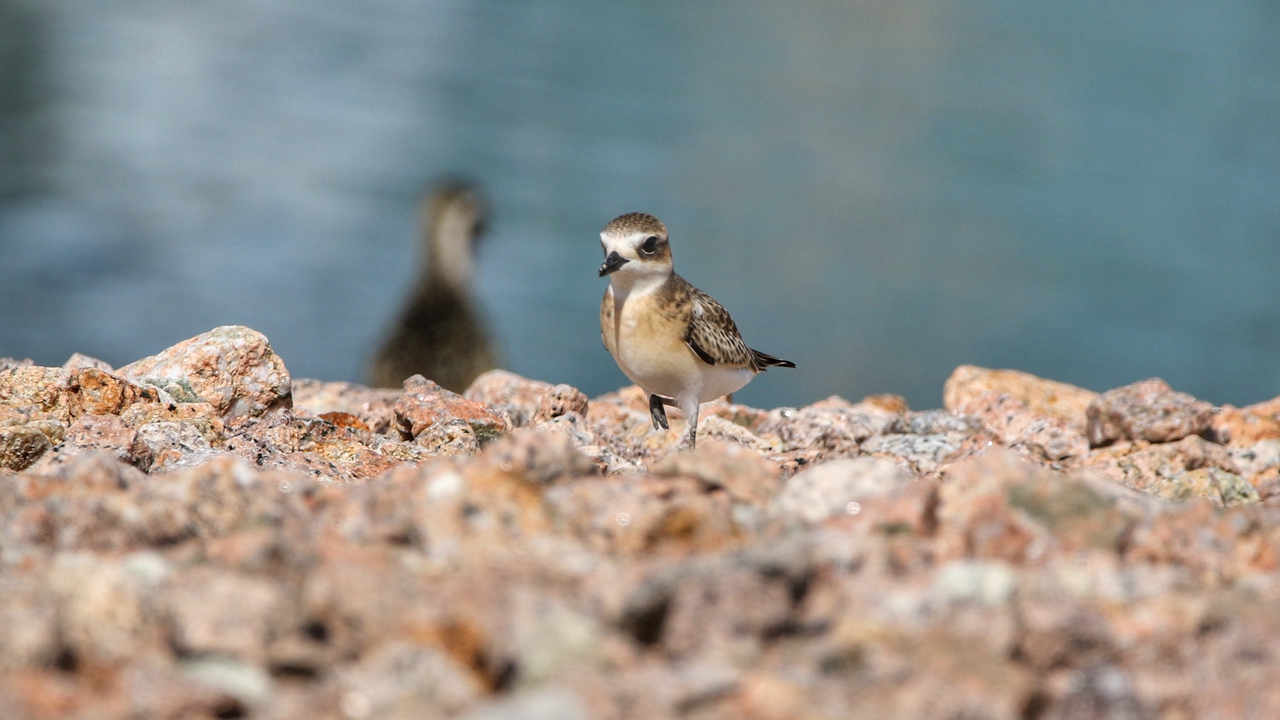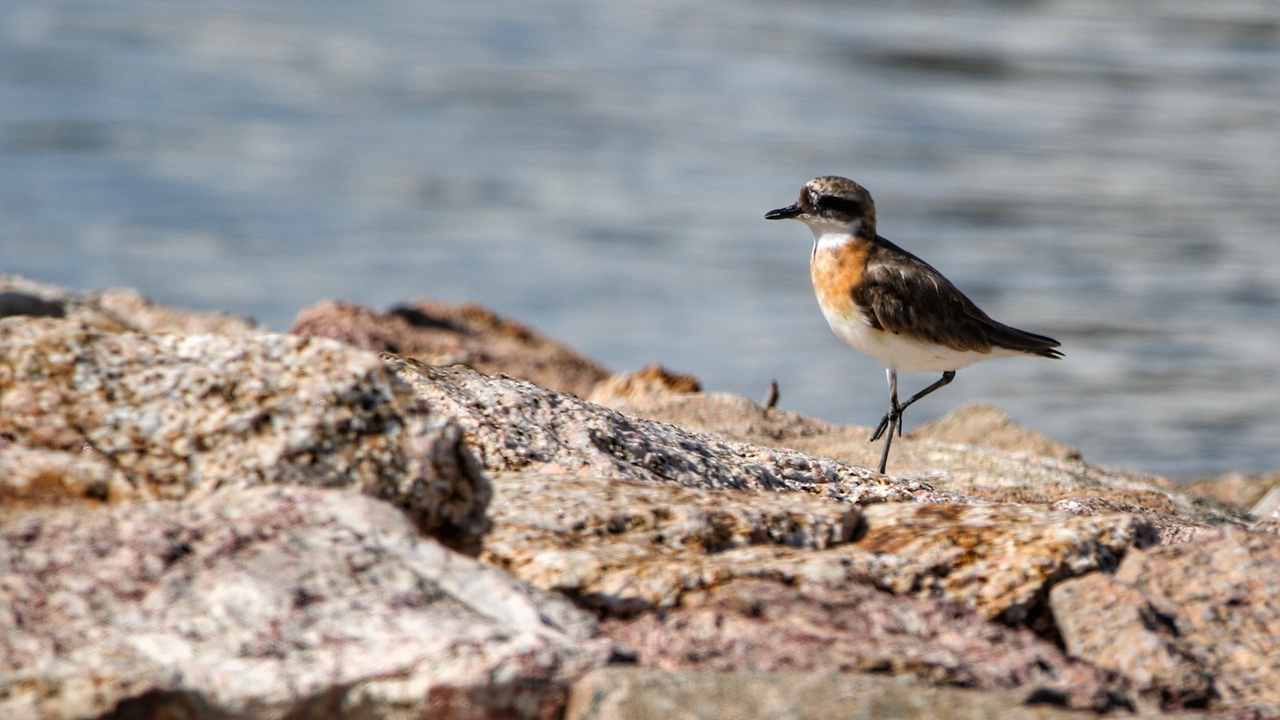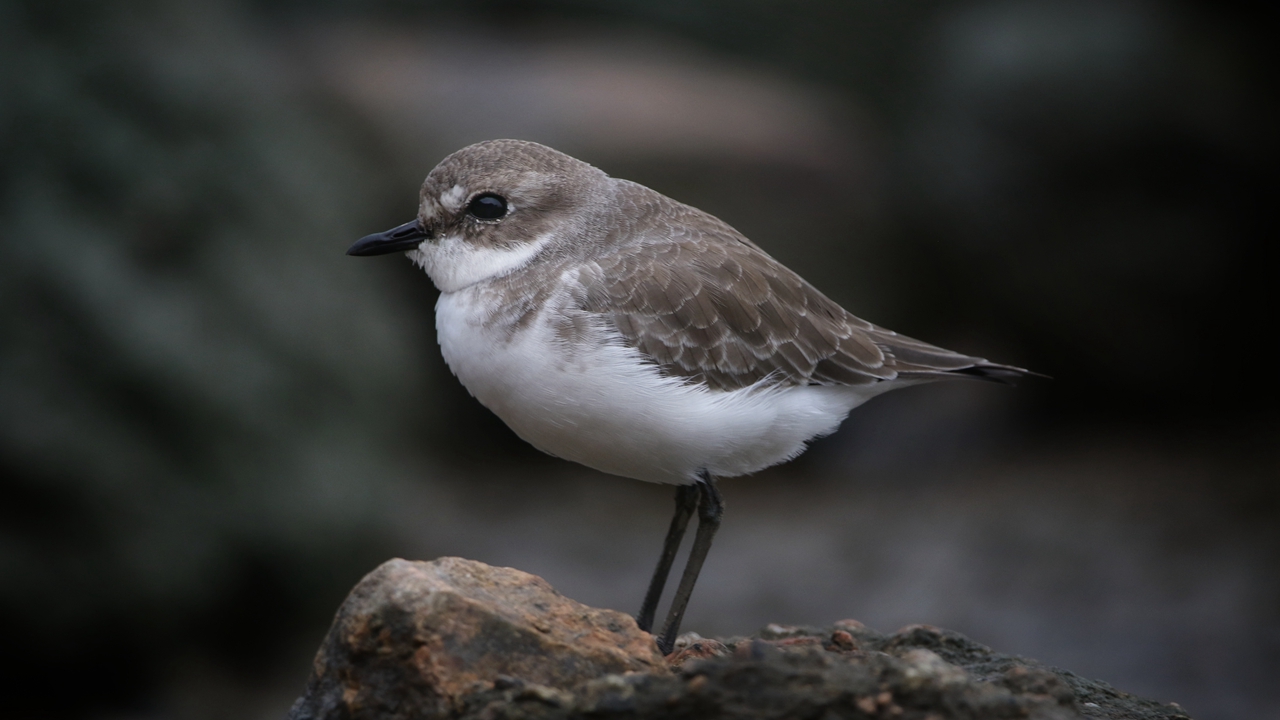The Siberian sand plover
Writer: Isaac Cohen | Editor: Zhang Chanwen | From: Original

A Siberian sand plover is seen among the rocks at Shenzhen Talent Park in Nanshan District. Photos by Isaac Cohen
The Siberian sand plover
The Siberian sand plover (Charadrius mongolus), also known as the lesser sand plover in general, can be found along the shores of Shenzhen. The small-size bird measures only 17 centimeters long, with a wingspan of about 45 centimeters. It has a plump body, short legs, and a straight, short bill. During the breeding season, male adults appear flamboyant with a black face mask, a white forehead, and a broad orange chest band. The rest of the body is of a pale grayish-browncolor. In contrast, females and juveniles are more homely, featuring brownish-gray upperparts and white underbellies.
蒙古沙鸻(其西部种群在《中国鸟类名录10.0版》中被列为独立物种“青藏沙鸻)是一种常见于深圳滨海地区的冬候鸟。体型小,身长仅17厘米,翼展约45厘米,躯干短圆,腿较短,喙粗壮。雄性个体夏羽具黑色贯眼纹及橙色胸带,额白色,余下体羽浅棕褐色。雌鸟和幼鸟体色较黯淡,主要呈灰褐色,腹部白色。
These birds undertake extensive migratory journeys. They breed in northernAsia, including Mongolia and eastern Siberia. As winter approaches, these birds travel thousands of kilometers, seeking warmer regions like Shenzhen. The city’s mild climate and abundant food supply make it an enticing wintering destination for these creatures.
蒙古沙鸻每年会进行两次长距离迁徙,往返于北亚、蒙古及西伯利亚的繁殖地与南部的越冬地。深圳气候温暖,食物丰富,是这些远道而来客人的理想目的地。

A Siberian sand plover is seen among the rocks at Shenzhen Talent Park in Nanshan District.
With their adept short bills, these opportunistic feeders preyon small invertebrates, such as insects, crustaceans, mollusks, and worms, which they diligently uncover from the sand or shallow waters.
蒙古沙鸻是机会主义觅食者,常在沙滩或浅水区域走走停停,一边行走,一边用短粗的喙捕食猎物。食谱包括昆虫、贝类、软体及蠕虫类动物。
Once a pair forms, during the breeding season, they meticulously select a nesting site, typically on the sandy ground or along the shoreline. The female lays a clutch of up to four eggs in colors that readily blend with the surrounding environment. Both parents share the task of incubating the eggs and ensuring their safety. The precocial chicks can move and feed independently shortly after hatching.
蒙古沙鸻在繁殖期一旦找到伴侣,便会立刻寻址精心筑巢,巢址常位于沙地上或海岸线附近。巢直接置于地面,雌鸟每窝产卵可达4枚,卵具有完美的保护色,远看于砂石无异。雏鸟属早成鸟,破壳不久后便会行走及随父母觅食。

A Siberian sand plover is seen among the rocks at Shenzhen Talent Park in Nanshan District.
The Siberian sand plover plays an indispensable role in Shenzhen’s ecosystems. By foraging along the shores, these birds contribute to controlling small invertebrate populations, effectively managing potential pest problems. Furthermore, their feeding behavior actively participates in nutrient cycling within coastal habitats, fostering a balanced ecosystem. They also act as valuable indicators of environmental changes, reflecting the overall health of the habitats they traverse.
蒙古沙鸻在深圳的生态系统中发挥着不可或缺的作用:它们有助于控制滨海栖息地中小型无脊椎动物的数量,从而可以预防潜在的虫害问题;此外,它们的觅食行为促进了生境中的养分循环,维系生态系统的平衡;它们还是重要的环境指示物种,其数量的变化能够直观地反映栖息地的整体健康状况。